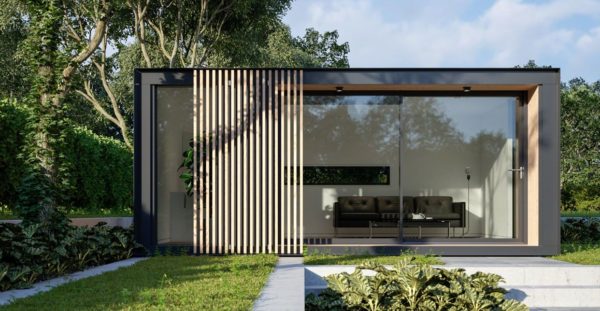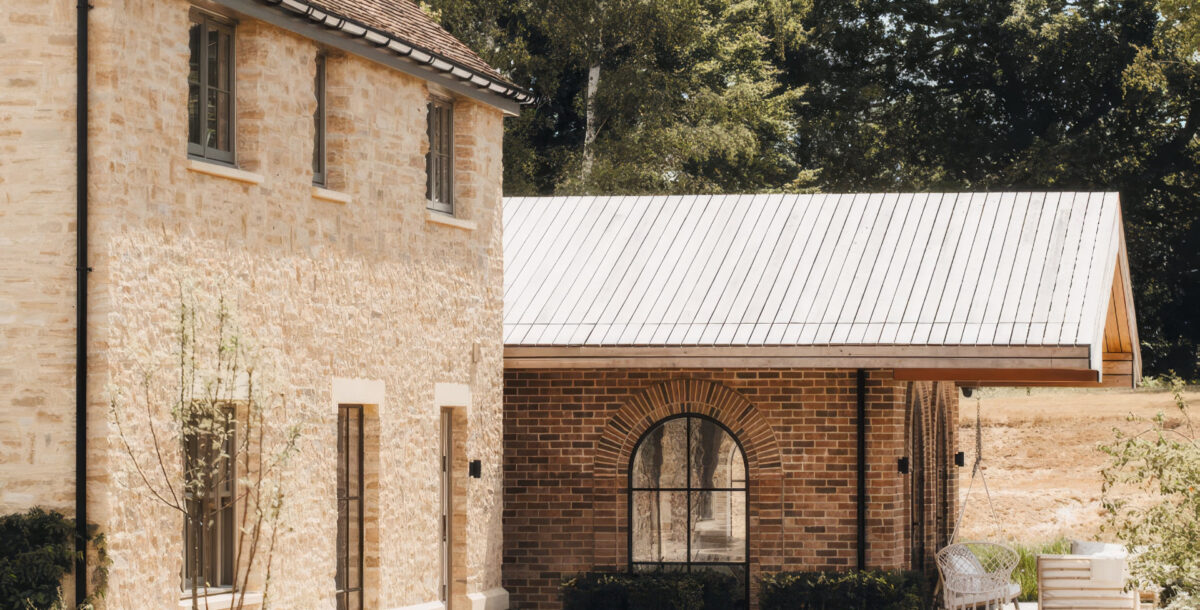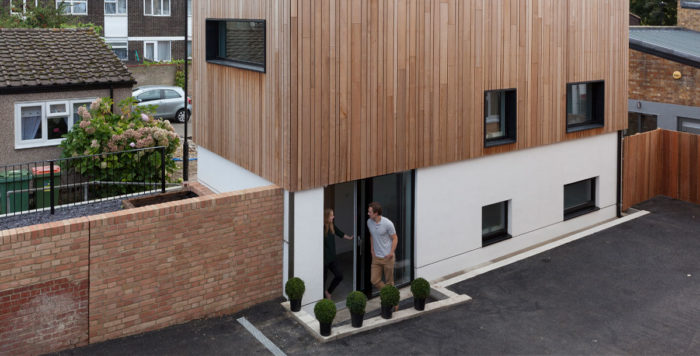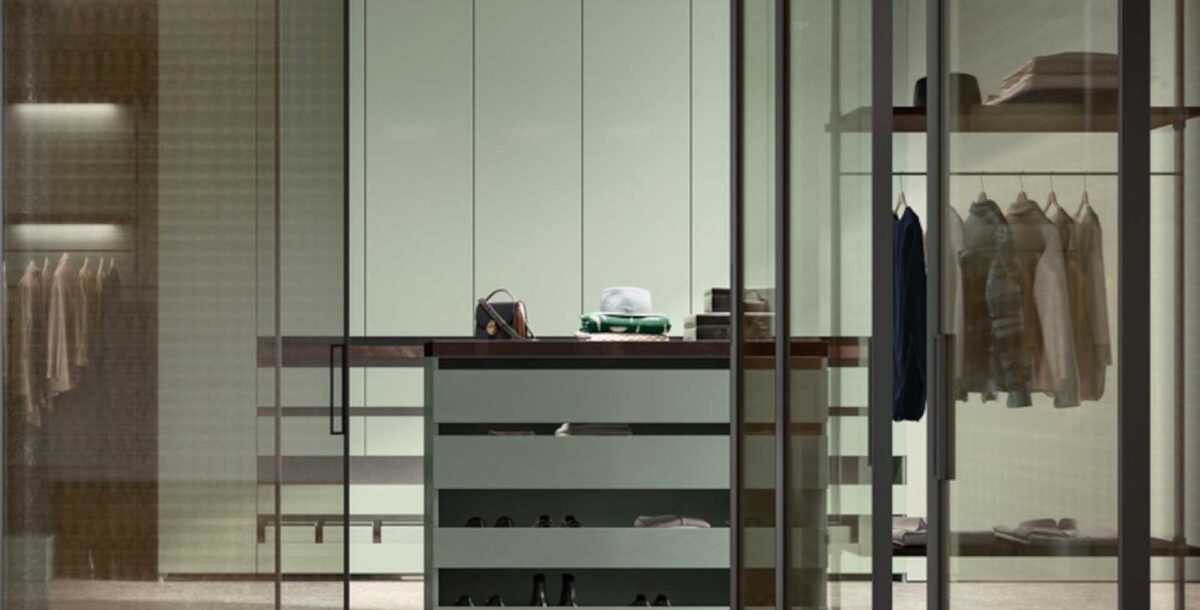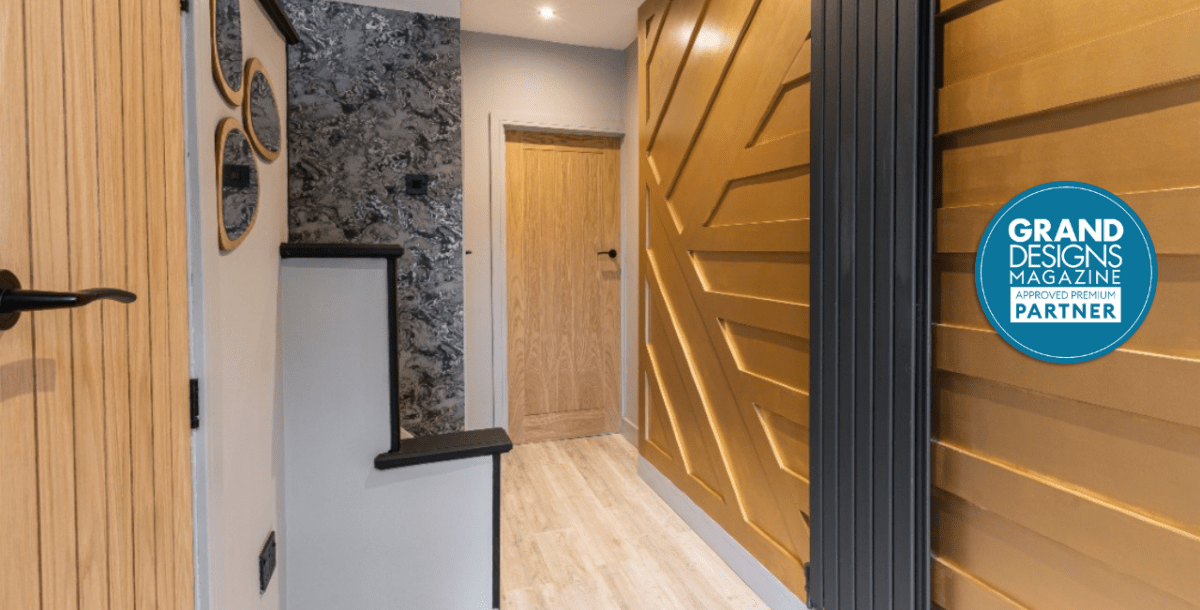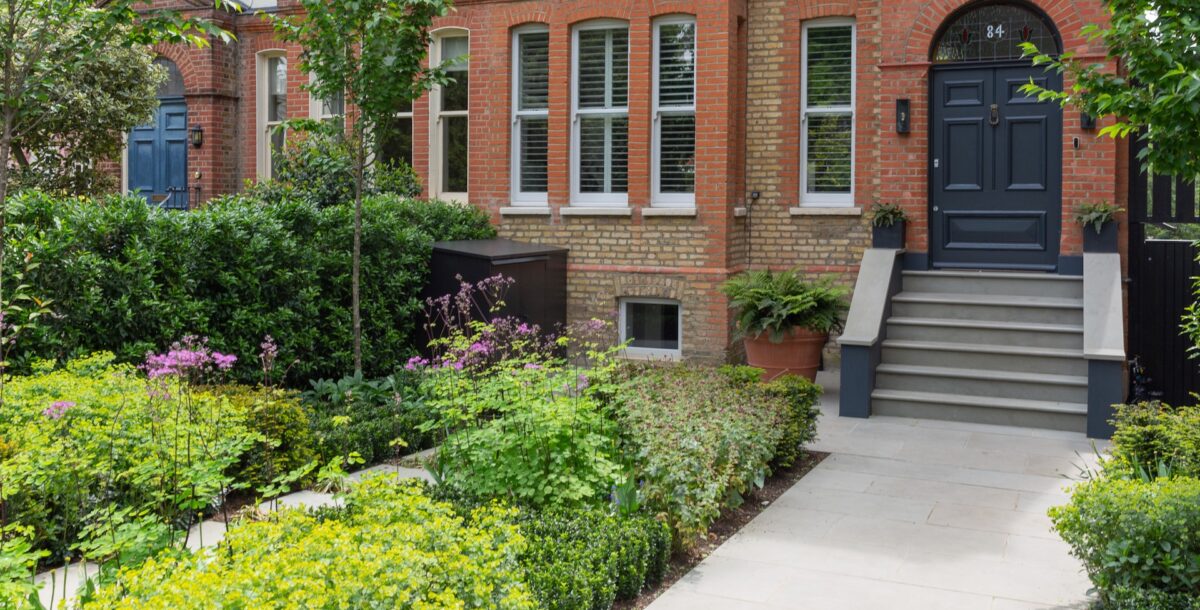Victorian house hall ideas
From colourful stained glass to chequerboard tiles to parquet via a built-in wine cellar, these Victorian house hall ideas will add a modern take on period charm
Victorian houses run the gamut, from countryside cottages to city terraces, but a Victorian house hall, be it large or small, has the power to set the tone for your whole home. Maybe you’re lucky enough to have perfectly restored original features (think, cornicing, wainscoting and tiling) or maybe you’re starting from fresh, adding details will add impact.
Functionally, a hall serves as a high-traffic transition area, providing practical storage solutions, although can sometimes be regarded as a corridor, but if you treat it as a room in its own right, you can positively transform the space, improving your guests’ first impression when they arrive, and the way you feel every time you come home. From colourful stained glass to chequerboard tiles to parquet via a built-in wine cellar, these Victorian house hall ideas will add a modern take on period charm.
Colourful stained glass
The Victorian era saw a big revival in medieval art and architecture and a particular interest in bringing back Gothic style stained glass. Thanks to its winning combination of colour and ornate design (a firm favourite of the Victorians) stained glass brought elegance and beauty to their homs.
While it was most commonly seen in churches and cathedrals, the Victorians used stained glass in residential properties with great success, and it’s the ideal Victorian house hall idea. Stained glass front door panels create a shards of colour in a play of light through the hallway and make a statement first impression. The designs were usually detailed, ranging from botanical to geometric.
For a simple and cost effective way of adding the stained glass look to your hallway, Purlfrost produces high-quality, made-to-measure window films that you can apply directly onto glass in minutes. They have a full range of Victorian stained glass effect films that are based on original Victorian designs. They also have collections of intricate designs in their Gothic or Arts & Crafts ranges.
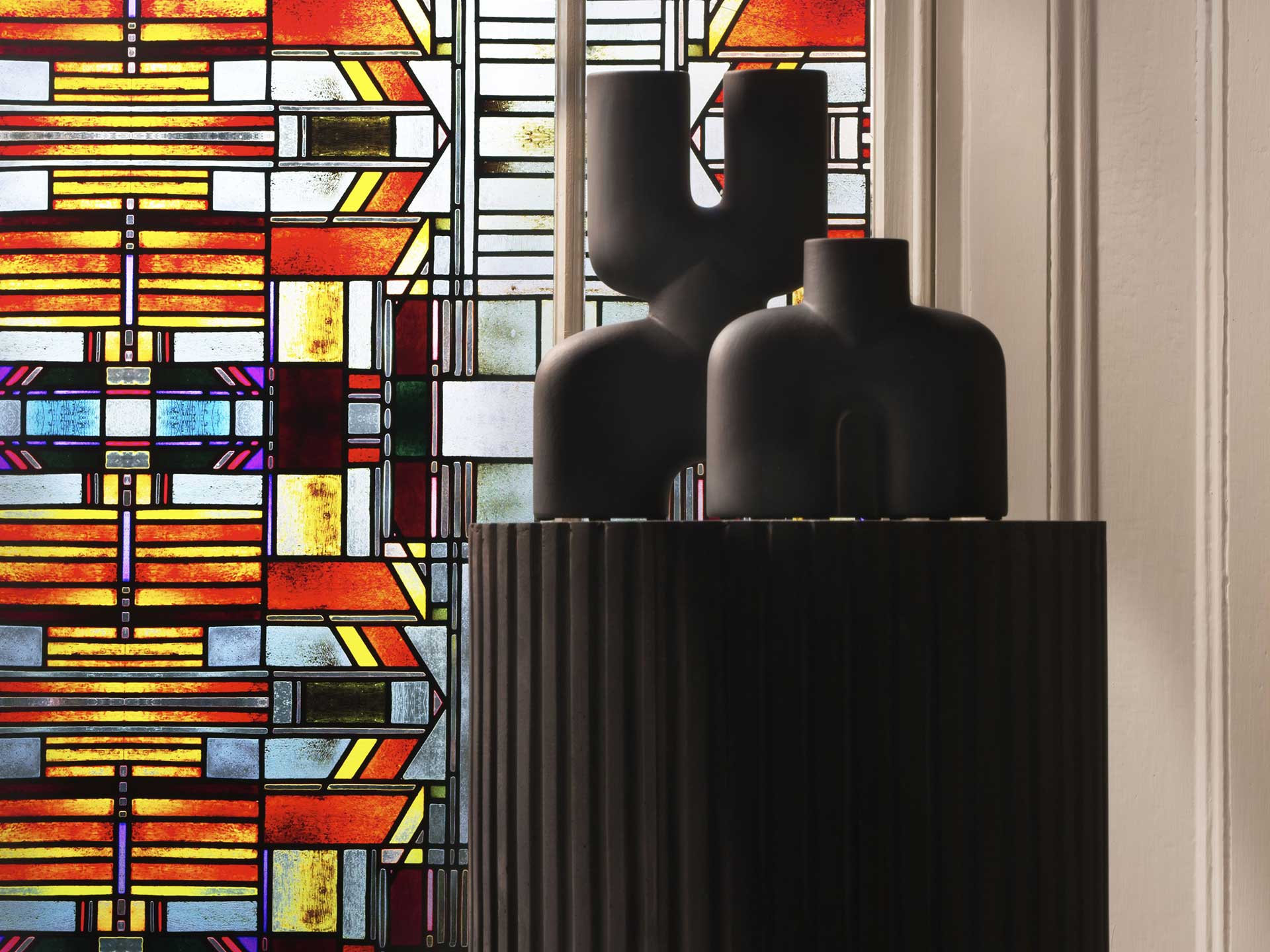
Image credit: Purlfrost
Statement wall lighting
Steam bending wood to make it pliable enough to shape is a technique that’s been around for centuries, and one that’s been embraced and brought into modern life by British designer Tom Raffield. Using this traditional craftsmanship Tom and his team create contemporary furniture and lighting, inspired by the organic shapes in nature, by hand, with as little environmental impact as possible through the process.
Tom’s Skipper wall lights use undulating loops of timber, and are made from “sixteen individual, sustainably sourced ash, oak or walnut wood petals and designed to produce golden light and eye-catching shadow effects.” They’re a great addition to cast light and interest to a long Victorian hallway and look particularly good combined with classic half wall panelling.
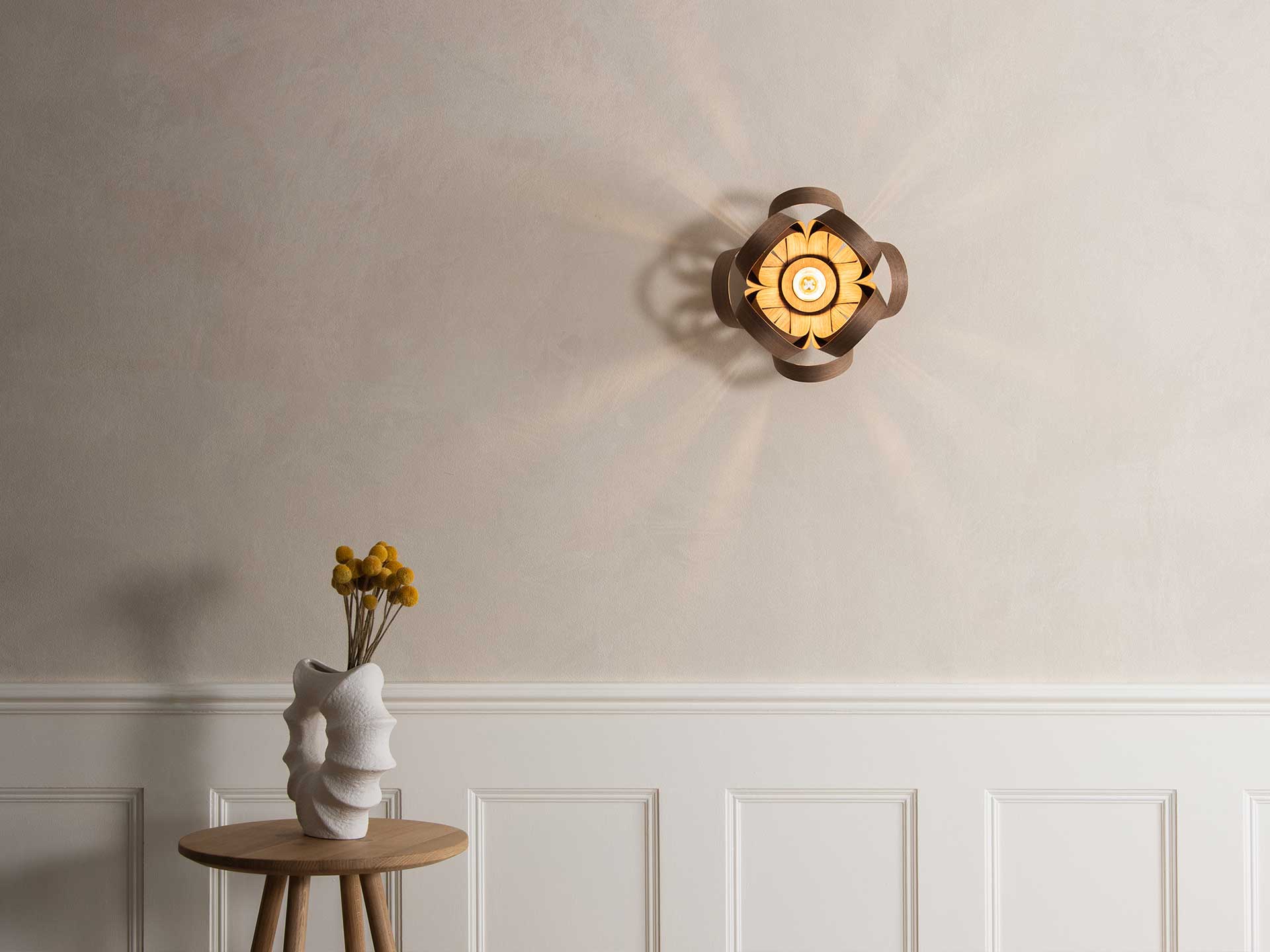
Image credit: Purlfrost
Elaborate botanical print wallpaper
Thanks to advancements in printing technology in the 19th century, combined with an interest in print, pattern and colour, wallpaper was booming in the Victorian period and became widely affordable and accessible. It wasn’t purely decorative either, wallpaper added insulation and could conceal any imperfections in the walls. Given the Victorians fascination with the exotic and the romantic, wallpaper designs were often a form of decorative escapism with elaborate often hand-block prints based on nature or geometric shapes, and often using a bright or rich colour palette. Touches of gold in the wallpaper brought a feel of opulence, while damask and embossing or flocking added texture and depth.
Little Green takes its Victorian wallpaper designs from their archive of wallpapers found in houses from the 19th century. From the Hencroft cow parsley print (found in an old embroidery house in Leek) to the delicate Tudor rose design, in the style of William Morris, (found in a skip outside a Richmond townhouse during a renovation). Divine Savages has a full range of fun prints from eco-paper Drunken Monkey (pictured) with 79% renewable fibres to the Art Deco inspired traditional fan motif of the Deco Martini print in Arsenic.
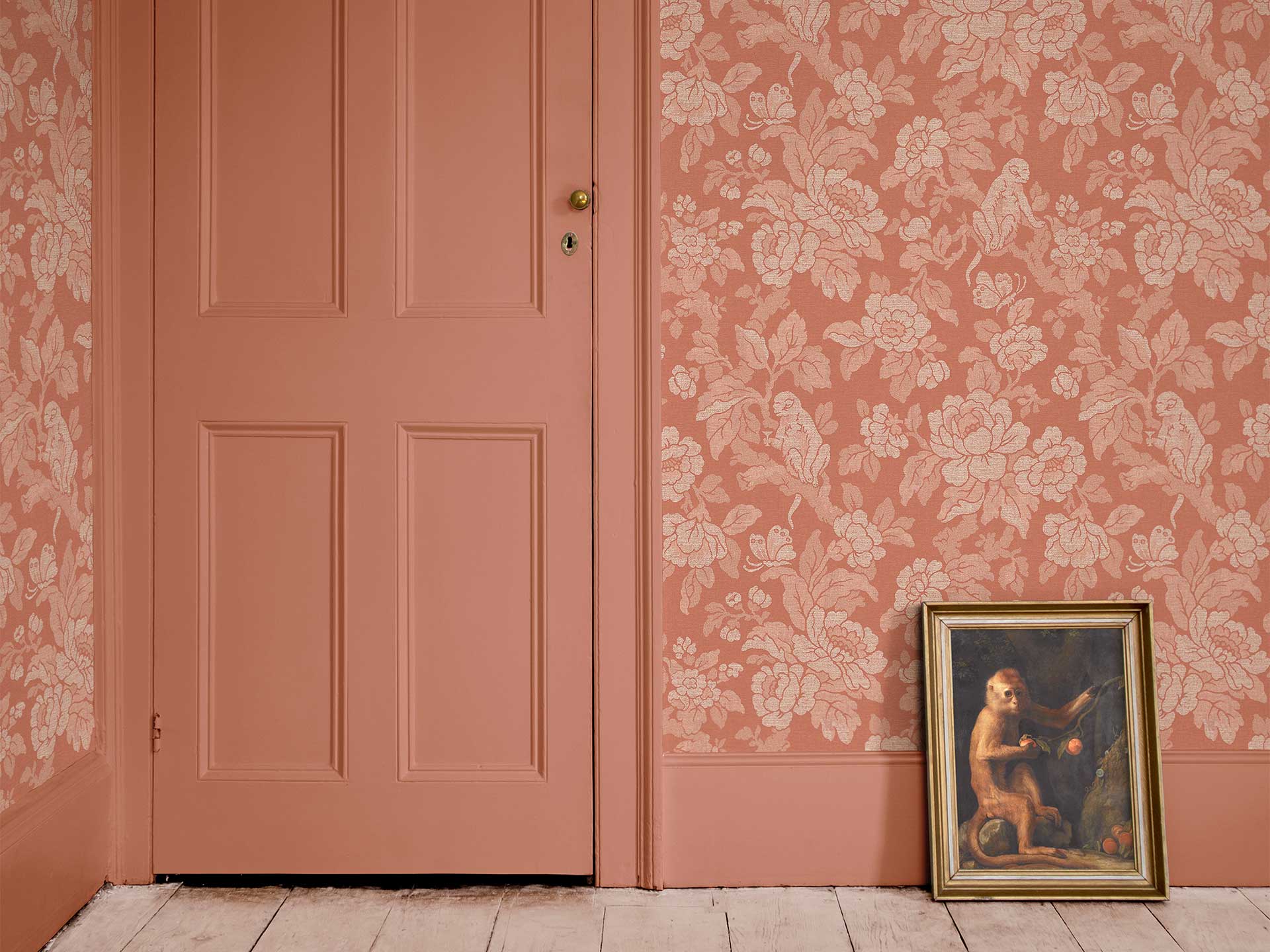
Image credit: Divine Savages
Arts and crafts revival
As a response to the Industrial Revolution, the Arts & Crafts movement emerged in Britain in the late 19th century to preserve the importance of craftsmanship, so that traditional techniques were not lost. The social reform of the Arts & Crafts movement (pioneered by prominent figures like William Morris, John Ruskin and C.R Ashbee) had profound influence on Victorian design championing quality craftsmanship and classic style. Today, we have a renewed sense of appreciation for it, and it’s a great way to add character to a Victorian hallway.
Annie Sloan has been transforming walls and furniture with her eponymous paint range since the 90s, and uses her chalk paint range to create playful murals, bordered like a painting with panelling. Victorian hallways can be a place that colour is forgotten, and bringing the look together with painted furniture can make a statement in the hall and act as a way of upcycling storage like a shoe cupboard. Look at the brilliant decorative artist Tess Newall for inspiration.
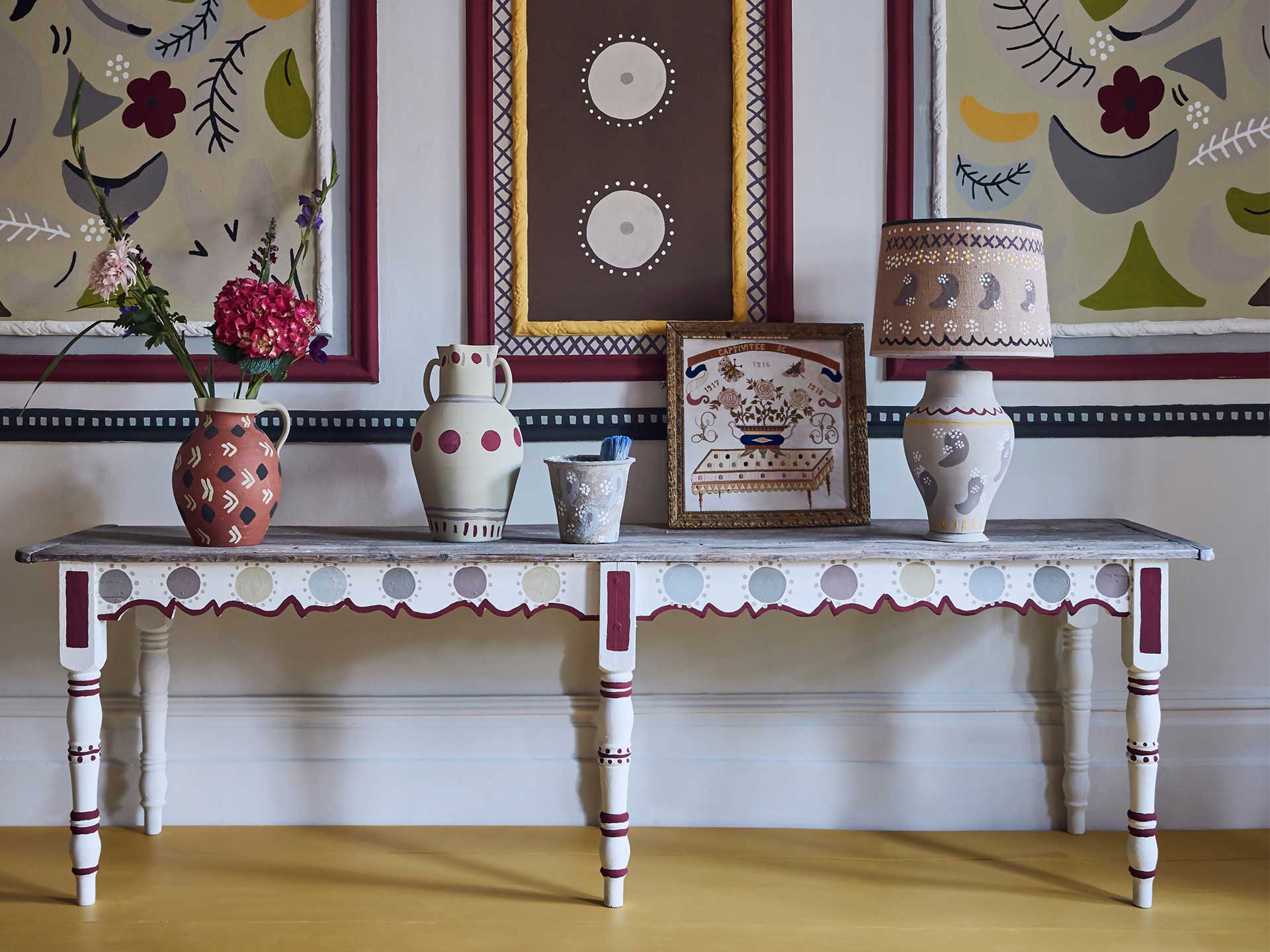
Image credit: Annie Sloan / Charleston chalk paint
Parquet flooring
Originating from the French word “parqueterie,” parquet refers to the technique of creating decorative patterns using small wooden pieces. The term was first used in the 17th century to describe the intricate wooden flooring designs popular in French royal residences and noble estates, but became popular in residential houses in the Victorian era and were a hallmark of elegant Victorian interiors.
The Sandringham Royal Oak tiles (pictured) are part of Hyperion Tiles’ new range of engineered design panels, and are inspired by original 17th Century Versailles panels. Each panel is 750x750mm in size and 15mm thick and features either micro bevels on all joints or at the panel perimeter only. They’re handcrafted, tongue and groove tiles, are hard wax oiled and also come with a handy 100-year guarantee.
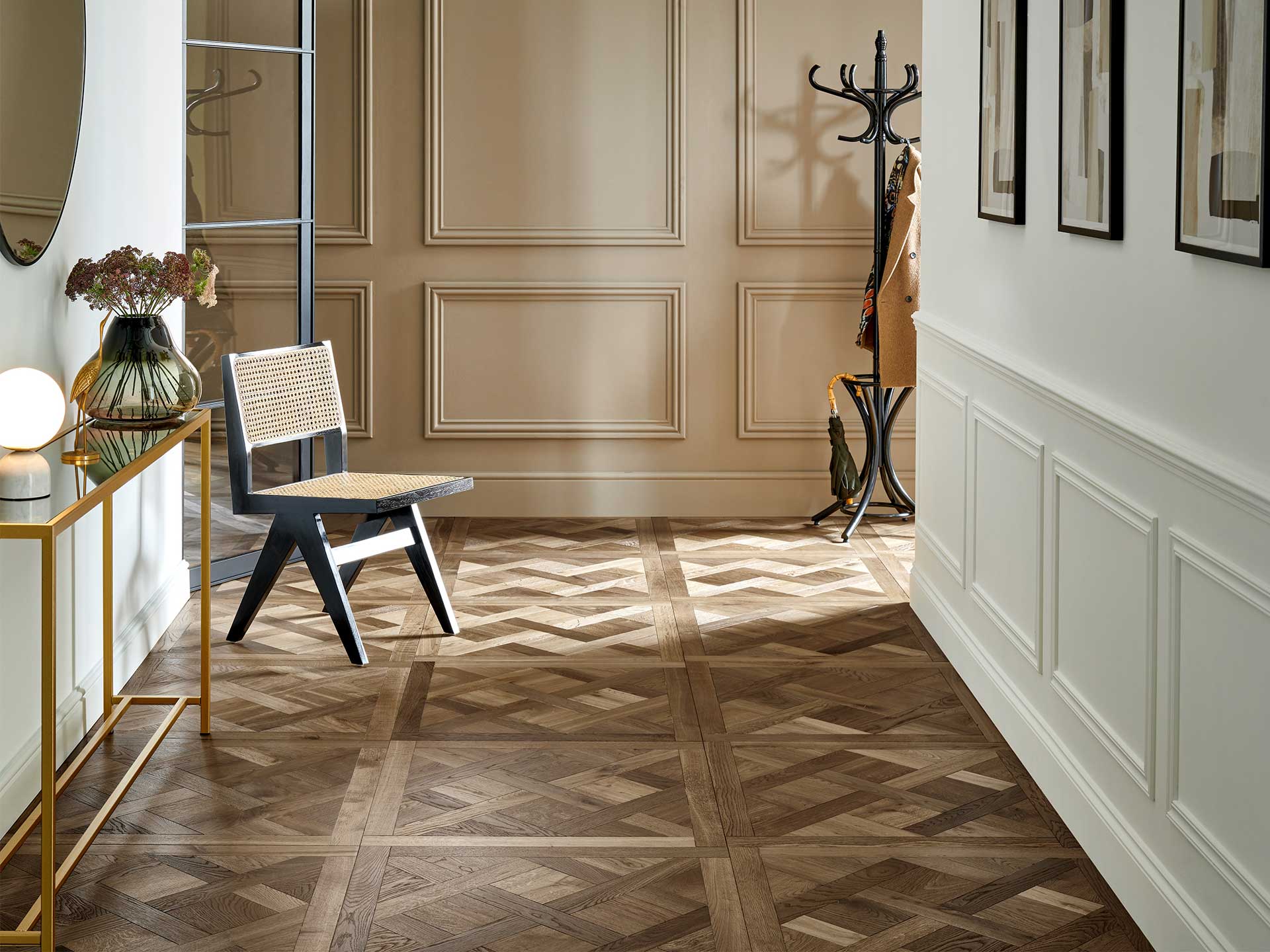
Image credit: Hyperion Tiles
Monochrome chequerboard tiling
If there was one defining tile type in Victorian houses, it was the black and white chequerboard tile, a classic style, that never dates. Whether you’ve got original tiles in tact in your house or if you put them in new, they can add a timeless look. The geometric pattern of black and white chequerboard tiles can also add the illusion of space, great if you’ve got a compact hallway.
Ca’Pietra has a hard-wearing selection of tiles to transform your Victorian house hall. Their monochromatic matte chess tiles give the effect of original Victorian mosaic style in a prescored tile format, while the porcelain ecru and charcoal has a softer tone with tumbled-looking edges to give it a realistic stone effect, the 40x40cm oversize tile will add a contemporary feel to your hallway.
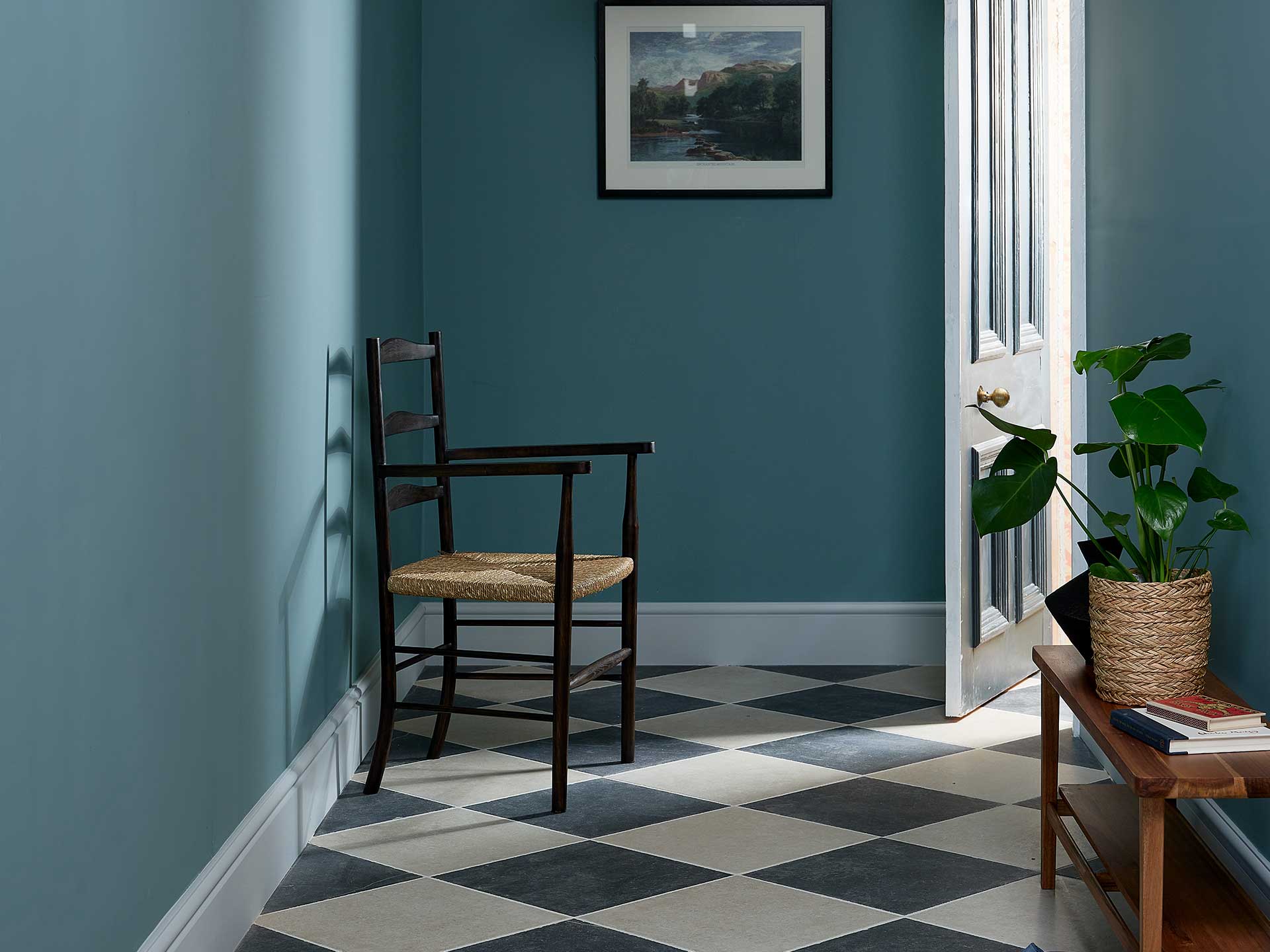
Image credit: Ca’Pietra
Hard-wearing, sustainable rugs
Rugs were a common feature in Victorian hallways, serving practical reasons for warmth and to protect the floors, given it’s such a high-traffic area. They were also decorative and added colour and pattern to a space. Down in South Devon, Weaver Green make durable rugs that fit the bill for both purposes. Each one of their rugs is made from recycled plastic bottles (many of which are recovered from waterways), and transformed into soft, durable textiles that mimic the look and feel of natural fibres.
They do it by shredding the plastic bottles into fine strips, heating and combing the strips until the fibres open, then spinning and stretching the fibres into soft, resilient yarn. They then use non-toxic dyes to create the colours and, using traditional techniques, hand-loom the yarn. With a range of collections from kilim to bohemian (like the Nomad Olympos pictured), each rug has 3,000 recycled bottles in it, is fully washable, and can be used indoors or outdoors.
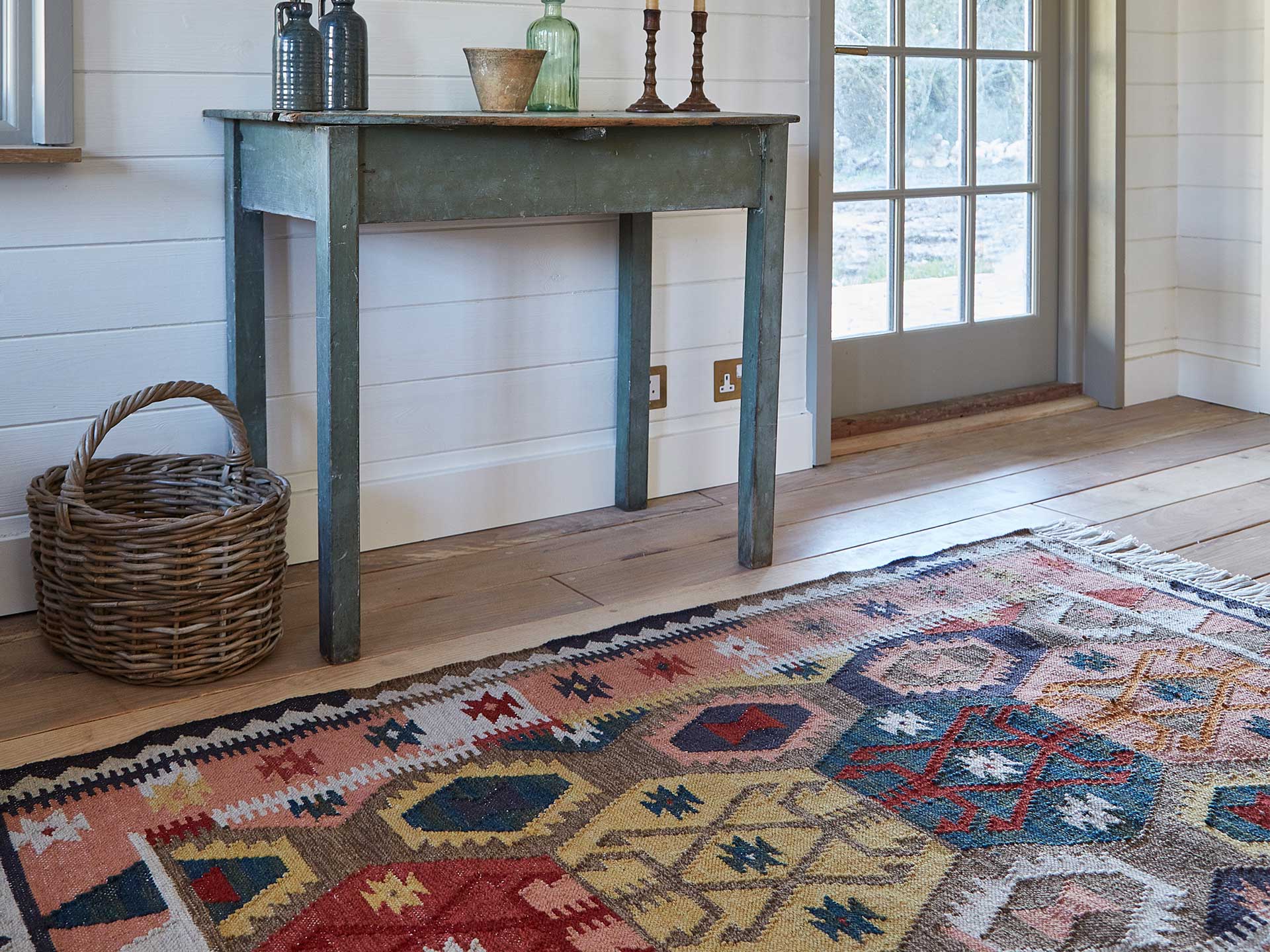
Image credit: Weaver Green
Spiral wine cellar
To create a real wow-factor in your hallway, Spiral Cellars has devised an ingenious, space-saving underground spiral wine cellar and you won’t need planning permission, or an existing basement. Spiral Cellars say its systems have a “natural passive ventilation system which uses the thermal properties of the cool-to touch limestone concrete used in our cellars to allow the natural cooling ground temperature to be absorbed, just like in a traditional cellar.”
“Natural air pressure brings cool, moist air in through an outside pipe. The cool, moist air is heavy and pushes the cellar air down to vent out through the bottom of the column. This maintains the Spiral Cellars natural humidity level.” Add a “walk over” toughened glass laminated door, so you can see down into it. The cellar doors are fully motorised and can be opened by the flick of a switch on the wall.
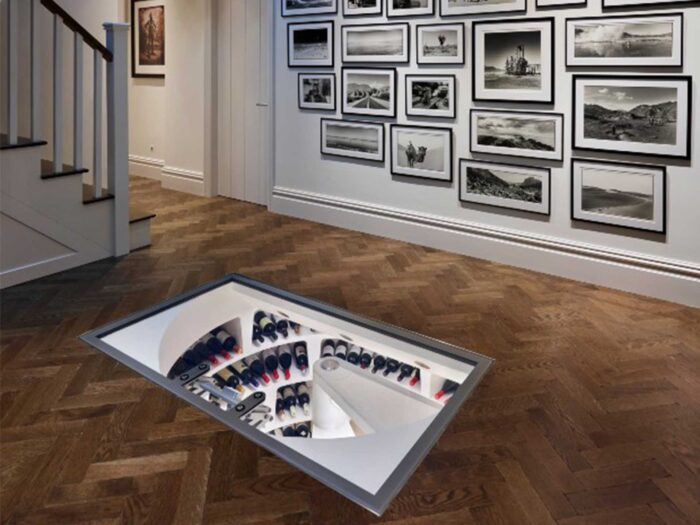
Image credit: Spiral Cellars

